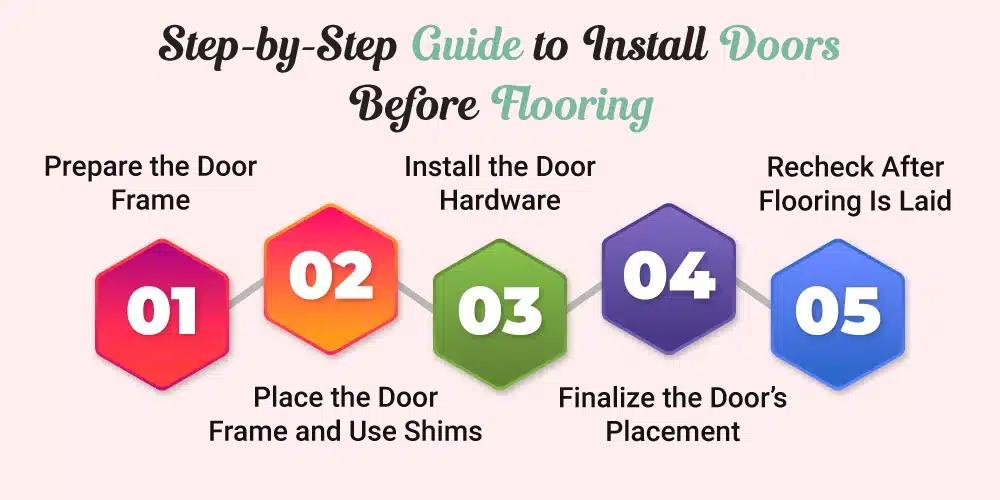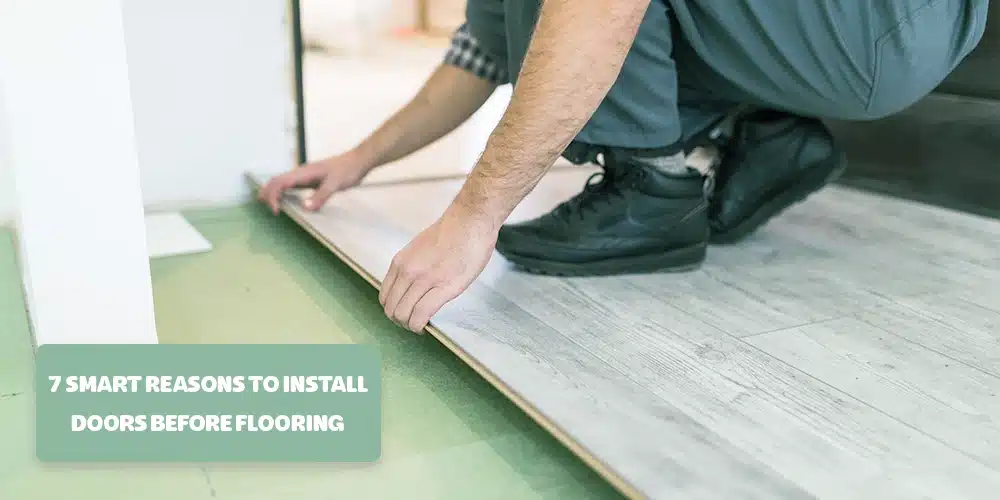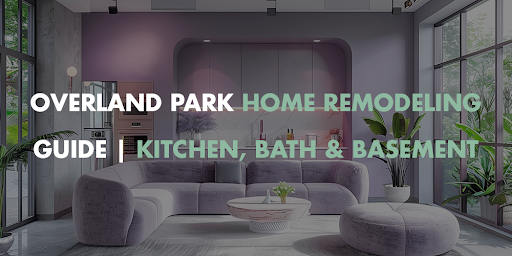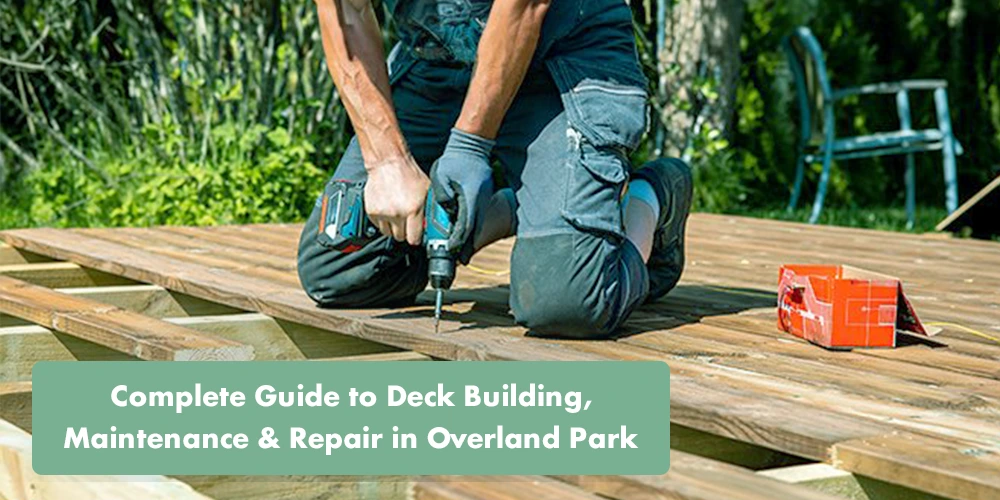Renovating or building a home is an exciting journey, but it comes with its challenges, especially when faced with conflicting advice. One common question many DIYers and homeowners struggle with is: “Do you install doors before flooring?” The truth is, getting this sequence wrong can lead to frustrating problems.
If you install flooring first, you might risk scratching it while installing doors or even end up with doors that don’t swing properly due to insufficient clearance. These issues not only disrupt your project but could also lead to costly fixes down the line.
So, for your kitchen, what’s the solution for flooring? Yes, you should install doors before flooring. But why? In this guide, we’ll explore why this order is the best approach, how it saves time, including how long it takes to install hardwood floors, and money, and how it leads to a professional finish that’ll make your renovation smoother and more efficient.
Why You Should Install Doors Before Flooring
Installing doors first helps you avoid costly repairs, protect your floors, and ensures a flawless finish throughout the renovation process.

1. Protect Your New Floors from Damage
Flooring installation might seem backward to some, but here’s why it’s essential. During door installation, you’re using tools that could scratch or dent your beautiful new floors. Plus, dragging heavy doors over a pristine surface can cause permanent damage. By getting the doors up first, you protect your floors and avoid potential rework.
2. Achieve Perfect Door Clearance and Swing
A door that doesn’t swing smoothly or drags across the floor is more than a minor inconvenience — it can ruin the entire aesthetic of a room. If you install flooring first, you risk doors getting misaligned or not having enough clearance, leading to doors that scrape the floor or don’t close properly. Installing the door frame before the floor allows you to set the door’s height correctly, ensuring a professional finish.
3. Simplify Future Flooring Replacements
Here’s a secret: Installing doors first is a smart strategy for long-term ease. If you ever need to replace your flooring, you won’t have to worry about adjusting or removing door frames. The extra clearance gives flexibility for future renovations. This makes it easy to replace the floor without having to move or rework the doors later on.
According to a 2024 survey by HomeAdvisor, 78% of pro contractors recommend installing doors before flooring for a cleaner, smoother finish. |
Are There Any Exceptions to Installing Doors First?
Here’s When Flooring Might Need to Go First, even when considering installing vinyl flooring over carpet!
While doors first is the general rule of thumb, there are some situations where installing flooring first might be necessary.
Floating Floors and Special Cases
For floating floors (such as some types of laminate or engineered wood), it’s sometimes preferable to install flooring before the door. These floors “float” over the subfloor and don’t require nails, which can make door installation more challenging. In these cases, careful planning is essential to ensure you achieve the right door clearance once the flooring is laid.
Retrofitting in Old Homes
In older homes, door frames and existing flooring often don’t line up as they should. If you’re working with existing floors and planning to replace or retrofit doors, you might need to install flooring first to ensure everything aligns correctly.
Dealing with Prehung or Slab Doors
For certain types of doors, such as pre-hung doors or heavy slab doors, the sequencing can vary based on the project. Pre-hung doors are typically easier to install if the flooring is already in place. However, if you’re aiming for perfection, doors first is often still the better choice.
Step-by-Step Guide to Install Doors Before Flooring

Ready to take the plunge? Here’s how to install doors before flooring to achieve flawless results.
Tools & Materials You’ll Need
- Door frame (pre-hung or slab)
- Shims
- Screws and screwdriver
- Level
- Measuring tape
- Saw (if adjustments are necessary)
- Painter’s tape or protective sheeting for the door frame
1. Prepare the Door Frame
Start by measuring your door opening carefully and preparing your door frame. Whether you’re working with a pre-hung or slab door, the frame needs to be in place before you lay the flooring. This includes setting the frame at the correct height and ensuring it’s level.
2. Place the Door Frame and Use Shims
Once the door frame is positioned, use shims to ensure the frame is perfectly level and aligned. Shims also help account for the thickness of your planned flooring. Make sure the frame is temporarily secured, but don’t tighten the screws just yet.
Important Tip: Don’t tighten the screws just yet! Shims allow for small adjustments, so keep it temporary until you finalize everything. |
3. Install the Door Hardware
Now, attach the door hardware, including hinges and handles, while the door is still easily accessible. This prevents damage to your newly laid floors and gives you a chance to fine-tune adjustments before the flooring is in place.
4. Finalize the Door’s Placement
Once you’re satisfied with the frame’s position, go ahead and screw it into place, making sure everything is flush and aligned. Double-check that the door swings freely and doesn’t scrape the floor.
5. Recheck After Flooring Is Laid
Once the flooring is installed, recheck the door swing and clearance. You might need to adjust the hinges slightly or make minor tweaks to ensure smooth operation.
Did You Know? A homeowner in Chicago, ZIP 60611, saved over $600 by installing the doors first, avoiding the need to replace scratched floors during the door installation. |
Common Mistakes to Avoid
Installing doors before flooring can come with some challenges if you’re not careful. One of the most common mistakes is setting the doors too low after the flooring is laid, which can cause scraping or damage. Another mistake is not ensuring smooth floor transitions, resulting in mismatched heights between the floor and door frame. Finally, forgetting to protect the door frames during flooring installation can lead to scratches and dents, ruining the finish. Here’s how to avoid these issues:To ensure you avoid common mistakes when installing doors before flooring, keep these tips in mind:
Mistake | How to Avoid It |
Setting the door too low | Use accurate measurements and double-check the door height before securing it. |
Uneven floor transitions | Ensure your door frame is level and adjust the trim if needed for a smooth transition. |
Forgetting to protect frames | Use painter’s tape or plastic sheeting to protect the frames from scratches or paint damage during flooring installation, consider essential tips for installing vinyl plank flooring for best practices |
Doors First vs. Flooring First
Criteria | Doors Before Flooring | Flooring Before Doors |
Damage Risk | Low | High |
Door Clearance Control | Excellent | Poor |
Ease of Installation | Smooth | Tricky |
Future Flooring Replacements | Simple | Difficult |
Professional Finish | Guaranteed | Risky |
Expert Tips for a Flawless Door and Flooring Installation
When installing doors before flooring, it’s crucial to follow a few expert tips to ensure a smooth process and professional results. These tips can help you avoid common issues, protect your work, and achieve a perfect finish.
- Use Shims for Accurate Door Height
Always use shims to set the correct door height during installation. This allows for minor adjustments as you lay down the flooring, ensuring your doors align perfectly once everything is in place. - Plan Ahead for Tile or Raised Floors, especially if you consider installing wood flooring over tile. If you’re working with thicker materials like tile or raised hardwood, make sure to plan for door frame adjustments beforehand
- Protect Door Frames During Flooring Installation
Protect your door frames with painter’s tape or plastic sheeting to avoid paint or finish damage while installing flooring. This simple step will save you from costly touch-ups or repairs down the road. - Recheck Door Swing After Flooring Is Installed
After the flooring is finished, always recheck the door swing and clearance. Minor adjustments to hinges or trimming might be needed to ensure smooth operation and prevent any scraping or jamming.
Achieve a Seamless Renovation with Expert Door & Flooring Installation
In the world of home renovations, sequencing can make or break your project. Installing doors before flooring is not just the smart choice; it’s the efficient, cost-effective approach that guarantees a seamless finish. With the right steps in place, you’ll experience smooth operation, long-term ease, and a professional result that reflects your hard work.
While there are exceptions, in most cases, this is the best practice. By following the right installation order, you’ll avoid common mistakes, save money on repairs, and achieve the perfect door and floor installation.
At Aaron’s Painting and Remodeling, we specialize in transforming your home with expert renovation solutions, including affordable luxury vinyl tile installation, ensuring everything is done right the first time. Whether you’re installing doors, considering options for choosing floor tile, flooring, or both, our team has the expertise to get it done with precision and care. Trust us to help you avoid costly errors, including signs of substandard hardwood floor installation, and achieve the professional results you deserve



